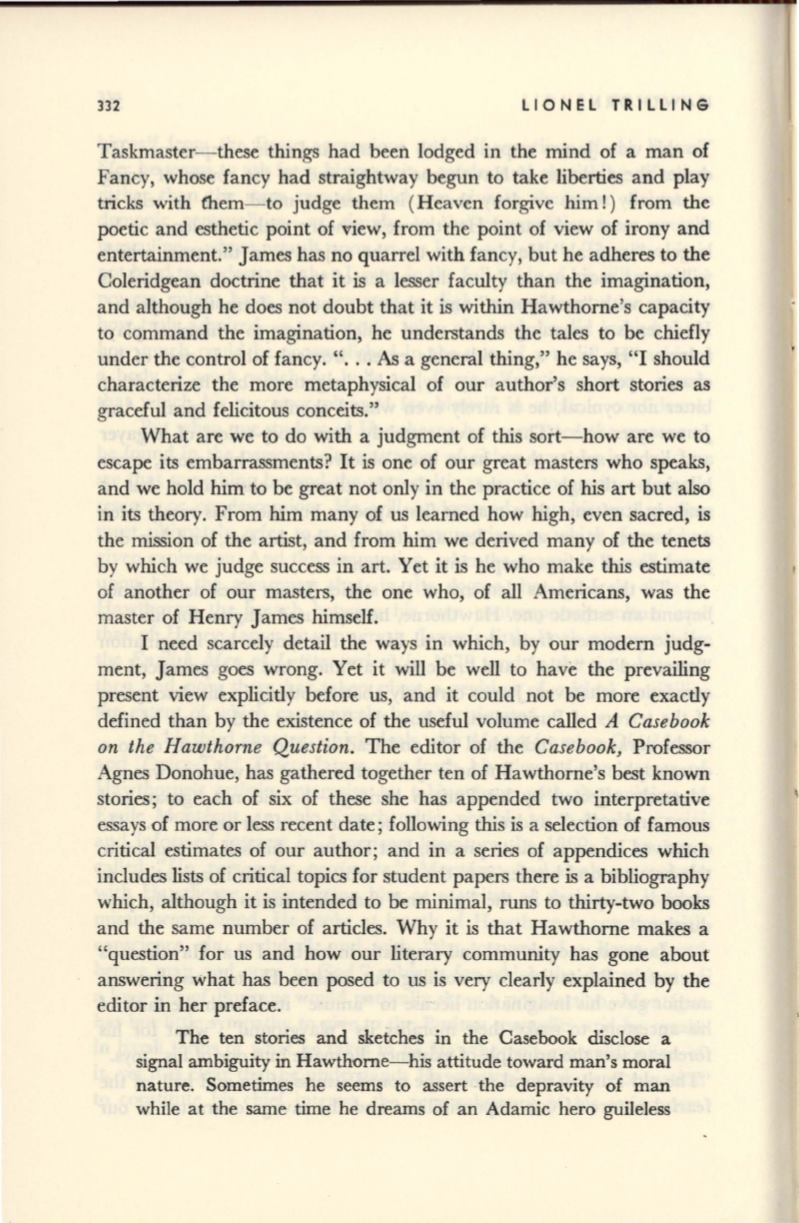
332
LIONEL TRILLING
Taskmaster- these things had been lodged in the mind of a man of
Fancy, whose fancy had straightway begun to take liberties and play
tricks with them- to judge them (Heaven forgive him!) from the
poetic and esthetic point of view, from the point of view of irony and
entertainment." James has no quarrel with fancy, but he adheres to the
Coleridgean doctrine that it is a lesser faculty than the imagination,
and although he does not doubt that it is within Hawthorne's capacity
to command the imagination, he understands the tales to be chiefly
under the control of fancy. " ...
As
a general thing," he says, "I should
characterize the more metaphysical of our author's short stories as
graceful and felicitous conceits."
What are we to do with a judgment of this sort-how are we to
escape its embarrassments? It is one of our great masters who speaks,
and we hold him to be great not only in the practice of his art but also
in its theory. From him many of us learned how high, even sacred, is
the mission of the artist, and from him we derived many of the tenets
by which we judge success in art. Yet it is he who make this estimate
of another of our masters, the one who, of all Americans, was the
master of Henry James himself.
I need scarcely detail the ways in which, by our modern judg–
ment, James goes wrong. Yet it will be well to have the prevailing
present view explicitly before us, and it could not be more exactly
defined than by the existence of the useful volume called
A Casebook
on the Hawthorne Question.
The editor of the
Casebook,
Professor
Agnes Donohue, has gathered together ten of Hawthorne's best known
stories; to each of six of these she has appended two interpretative
essays of more or less recent date; following this is a selection of famous
critical estimates of our author; and in a series of appendices which
includes lists of critical topics for student papers there is a bibliography
which, although it is intended to be minimal, runs to thirty-two books
and the same number of articles. Why it is that Hawthorne makes a
"question" for us and how our literary community has gone about
answering what has been posed to us is very clearly explained by the
editor in her preface.
The ten stories and sketches in the Casebook disclose a
signal ambiguity in Hawthorne- his attitude toward man's moral
nature. Sometimes he seems to assert ·the depravity of man
while at the same time he dreams of an Adamic hero guileless


